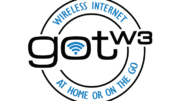It certainly seems to be taking over.In the eight years since we first learned about USB C, or “USB 3.x with Type C Connector” as it is properly called, it’s started to take over the PC and mobile landscape. As well it should… USB C combines the speed of the SuperSpeed USB 3.0 standard with a MicroUSB-sized connector that’s completely reversible so that you can’t put it in wrong. It can carry enough power to run a computer, too. In a lot of ways, it’s the USB we always wanted.
USB takes over… slowly but surely
USB C is showing up everywhere. It’s on the latest laptops from Apple, Dell, and others — Apple has doubled down on the technology, removing almost all other ports from its new laptops. It’s on the latest cell phones, and while its design is still inferior to Apple’s Lightning connector it’s a far sight better than MicroUSB. (Why do I say that? The USB C plug allows dust in, and so does the jack. Lightning connectors are smaller and the plug stays dust-free.) Pretty much anything is better than MicroUSB, though.
USB-C’s slow roll is a little frustrating, but it makes sense considering the absolutely mindboggling number of things that use the old USB-A connector. It’s going to take some time before USB-C gets that much market penetration.
But will it be the last connector you’ll ever need? Ever?
I don’t know about ever but…
…I can say that we’re not quite there. USB-C can do a lot. It can carry more power than pretty much any laptop could need. It can transfer data as fast as any hard drive can take it. It’s slim and handsome and won’t snag other cables as you fish it through the mess behind your desk. But it’s not perfect.
The Type C connector is used for both USB and Apple’s Thunderbolt. This can work out, but it can also be a bit of a mess. Both technologies are sufficiently robust. They can power a monitor or external hard drive, and provide a single-cable solution in most cases. But figuring out what you really want and need can be a bit confusing. There’s no way to tell by sight if that USB port can provide 10 watts or 120, and no way to know what kind of power a USB-powered device needs.
It’s also not clear why the world at large needs Thunderbolt. Like Apple’s previous poster child, FireWire, it’s a super-high-speed transport that has practically no real-world application. The only good thing about it is that due to sharing the Type C connector with USB, the same port can be Thunderbolt or USB depending on what’s needed.
Looking at the future
I think this is a temporary setback. I think USB-C is the most significant change to computer connectivity since the original USB 1.0 in the 1990s. Before USB, you needed huge cables with tons of easily-broken pins to connect to things, and you also had to learn arcane ways of connecting and configuring ports. Apple products and PC products never used the same ports (ever!) and there really weren’t even good adapters to go from one to the other. All of a sudden, along came USB which could be used for keyboards, mice, printers, modems… all those things we cared about so much then. You could even add ports by just using a hub which was awesome. The world moved to USB pretty fast, because it was just that good. By the standards of the day it was small and easy to connect. Of course we’re more demanding and lazy now, which is why we need things to be even smaller and easier to connect. USB-C obliges.
If you’re not quite ready to move over to USB-C but your computer is, you can still get adapters like this one which let you convert USB-C to its older cousin, letting you use all those old cables. There’s very little sacrifice in speed and your USB cables will work with your new device. For the best in USB-C accessories, shop Solid Signal now!





